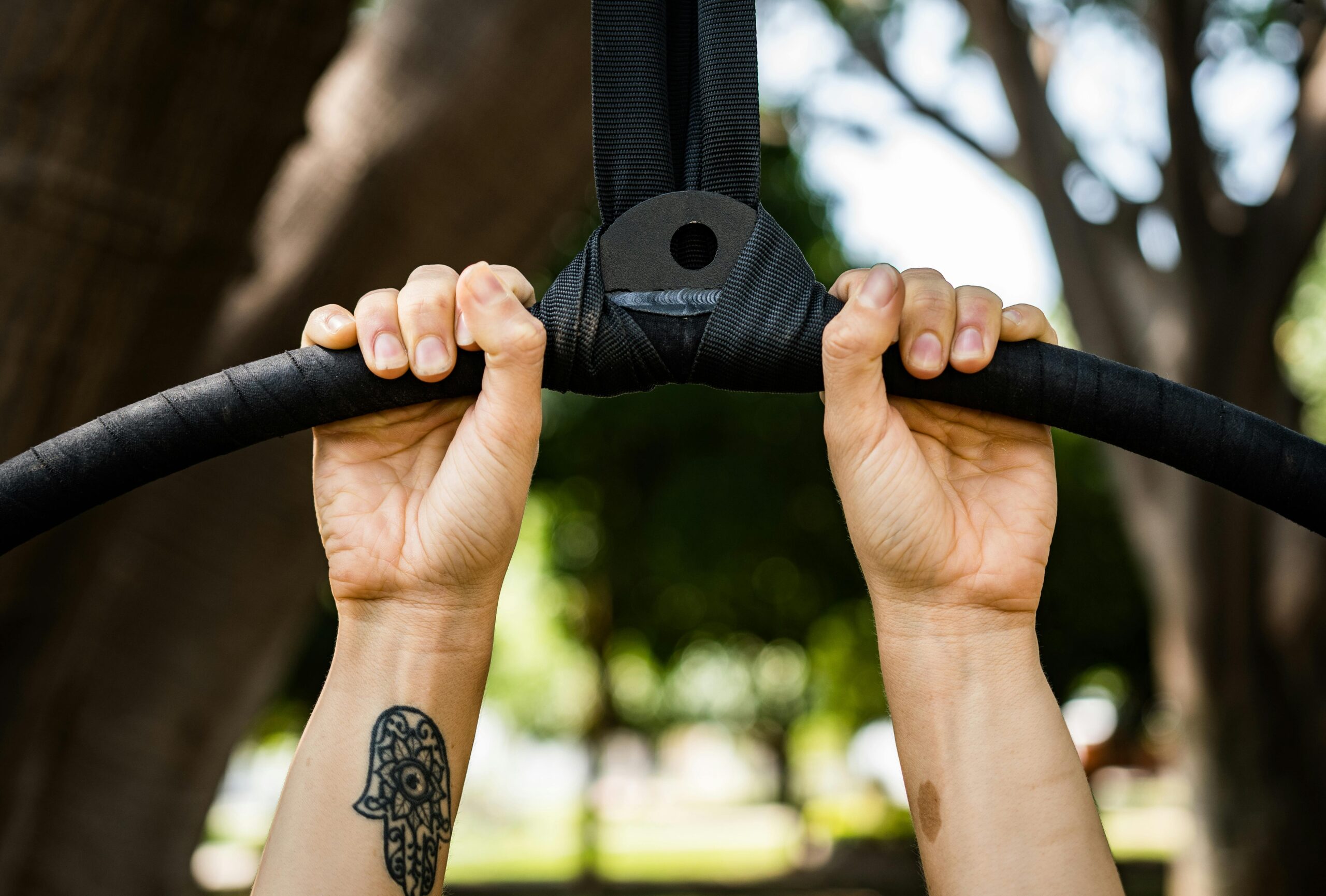
When most people think about fitness, they picture squats, push-ups, or maybe even burpees. But there’s one underrated measure of health and strength that doesn’t get enough love: grip strength.
Believe it or not, how strong your grip is says a lot about your overall health. It’s even being proposed by researchers as a new vital sign—something as important as your blood pressure or heart rate (Vaishya et al., 2024).
The traditional way to test grip strength uses a handheld device called a dynamometer. You squeeze it as hard as you can, and it tells you how strong your grip is in pounds or kilograms. Simple, right?
But here’s the thing: I’m a minimalist trainer. We train with bands, kettlebells, and bodyweight. So while the dynamometer is a solid tool, I’ve got a couple of more practical, real-life ways we use to track and improve your grip strength—and why you should care.
Why Grip Strength Is So Important
Whether you’re swinging a kettlebell, carrying groceries, or climbing a ladder, your grip is involved. But beyond the obvious, here are five science-backed reasons why grip strength is worth our attention:
1. It Reflects Total-Body Strength
Your hands don’t exist in isolation. A strong grip usually means strong forearms, shoulders, back, and core. Grip is often a reflection of how well your entire body is functioning—especially during compound movements.
2. It Tracks Your Progress Over Time
Grip strength tends to decline with age or inactivity. If we’re building it up, we’re usually improving your overall health. It’s a measurable way to see your body getting stronger—even when the scale doesn’t move.
3. It’s Linked to Longevity
Studies have shown that people with stronger grip strength tend to have lower rates of heart disease, diabetes, stroke, and all-cause mortality. While grip strength itself isn’t the cause of longer life, it’s an excellent predictor of overall health (Vaishya et al., 2024).
4. It Helps Prevent Injury
A strong grip helps stabilize joints like the wrists, elbows, and shoulders. This reduces the risk of strains and overuse injuries—especially important if you’re working at a computer, lifting weights, or hauling groceries.
5. It Boosts Confidence and Functionality
From opening jars to carrying suitcases to pulling yourself up, your grip is part of almost everything you do. Improving it builds confidence and supports independence, especially as we age.
So How Do We Test It Without a Dynamometer?
While we can use a dynamometer if needed (and they’re accurate when calibrated), I prefer two minimalist alternatives that match our training style and still deliver real value:
The Straight-Arm Hang
We can use a pull-up bar or TRX frame. You’ll hang with arms straight, shoulders packed down, and feet off the ground. We time how long you can hold that position with good form.
This is not just a grip test—it also challenges your core, shoulders, and mental toughness. And according to the same research, testing grip through real-world function is just as meaningful.
The Seated Band or Cable Hang
If hanging isn’t an option, we replicate the challenge using a resistance band or pulley system. You’ll hold a static position, like the top of a lat pulldown, under tension. It’s controlled, scalable, and highly effective.
| Fitness Level | Expected Hang Time |
|---|---|
| Needs Improvement | < 20 seconds |
| Average Fitness | 20–30 seconds |
| Above Average | 30–60 seconds |
| Strong | 60–90 seconds |
| Elite | 90+ seconds |
Tracking Progress
We could test your hang time every few weeks—just like we track reps, weights, or mobility. Watching your hang time increase is a tangible, confidence-boosting way to measure how much stronger and more capable you’re becoming.
You don’t need to hang for minutes or crush metal to see benefits (PitchSix, 2020, May 19). Just showing up, doing the work, and seeing small improvements over time is what matters most.
Final Thoughts
You don’t need high-tech gear to measure meaningful progress. Grip strength is one of the most functional, accessible, and powerful indicators of fitness—and we’ve got simple ways to build and test it.
Next time you’re swinging a kettlebell or holding onto that row just a few seconds longer, remember: your grip matters. And you’re not just getting stronger—you’re building a body ready for anything.
Want to test your grip strength? Let’s add it to your next session.


